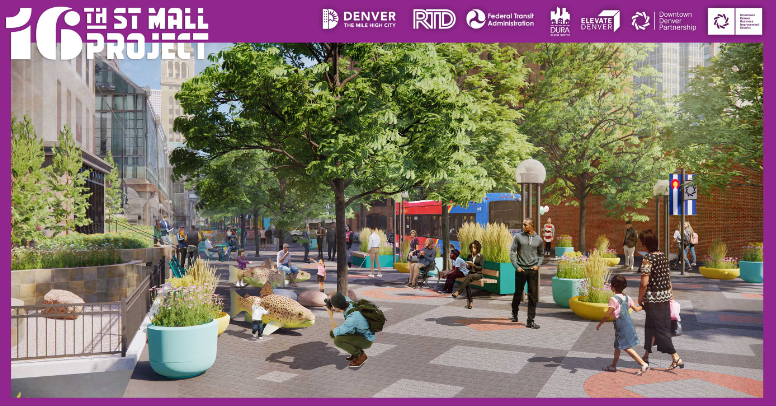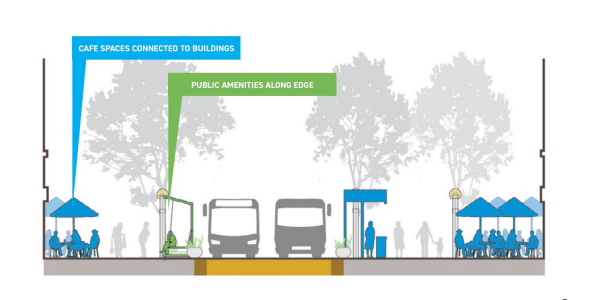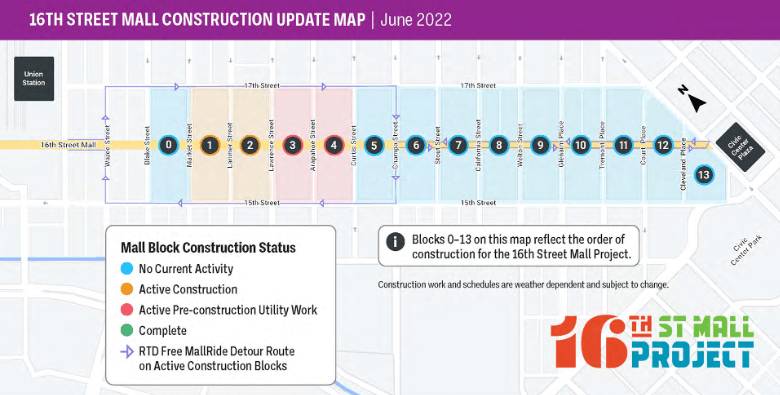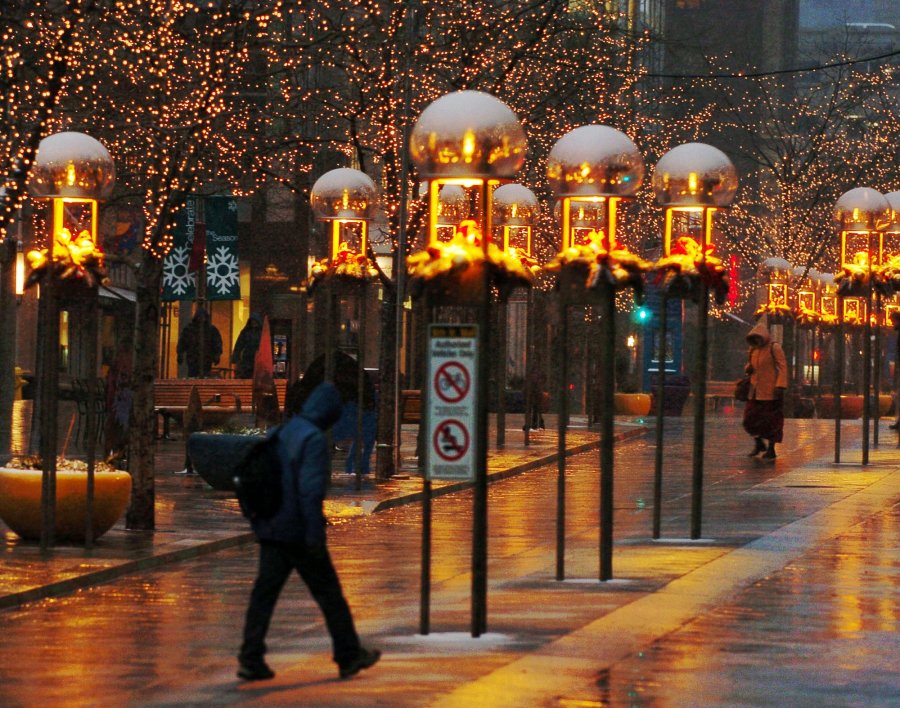DENVER (KDVR) – While walking over the tiles of the 16th Street Mall, you may notice that specific squares seem intentionally placed and spaced. That’s because certain tiles play a role in the larger art constellation that can only be fully appreciated from an elevated vantage point.
Even if you are unable to hover above the open-aired market of sorts, you can still take in the peculiar pattern scattered across the walkway that is designed to look simultaneously like both a Navajo rug and the distinct pattern seen on the back of the regionally-present diamondback rattlesnake.
According to Denver’s Department of Transportation, RTD has been serving 40,000 daily customers along the 16th Street Mall since it opened back in 1982. Its designers had a 30-year shelf life in mind when they laid out the blueprints, but now, city officials find themselves nine years passed the supposed expiration date of the mall.

That’s where those running the $149 million 16th Street Mall Improvement Project come into play.
The forecasted impact of the 16th Street Mall Project
According to The Cultural Landscape Foundation, the architectural firm responsible for the Louvre in France, I.M. Pei and Partners designed the 16th Street Mall in tandem with landscape architects Hanna/Olin.
City officials said that it takes $1.5 million annually to address maintenance attached to the deteriorating infrastructure in addition to running the transit system smoothly. Pedestrian congestion and general delays with RTD can also be attributed to the mall’s technological shortcomings.
FOX31 asked officials with CDOT whether the project includes permanently altering or removing the culturally significant details, specifically, the ode to the Navajo tribe design that resembles the diamondback rattlesnake.
“The pavement pattern will honor and complement the existing character of the I.M. Pei- and Hanna/Olin-designed mall by retaining the 45-degree diagonal grid to resemble the Navajo rug and diamondback rattlesnake pattern, and retain the small, medium, and large diamond patterns in the same, or approximately the same, spatial relationship as the original design.”
–Section 2.4.1.2 of the Environmental Assessment
The continued presence of the shade-producing tree canopies along the mall has also been a concern brought up during public input meetings. However, according to the 16th Street Mall Alternatives Analysis and Environmental Clearance, they will be replaced with larger canopies that will benefit, health-wise, from the mall’s redesign.
“The temporary loss of tree canopy will leave a more open environment, less shade, and a reduced sense of enclosure while the new trees mature. The temporary loss of trees and tree canopy will be mitigated consistent with CCD Executive Order 123, Chapter 8, City Tree Preservation,” reads the Visual and Aesthetic Resources section of the report.

Additional features outlined in the redevelopment plan:
- Wider pedestrian walkways.
- The replacement of the granite pavement system.
- Improved drainage.
- The realigning and consolidating of RTD’s transitway.
- Cross street upgrades that can be troublesome for pedestrians when crossing.
- A maintaining of the historic character the original designers had in mind when first creating it.
The last point is a welcome clarification for those who were concerned about project officials maintaining the history of the mall. The project details a plan to both replicate and restore the Broadway fountain to its former glory and upgrade the historic replica light fixtures that decorate the walkway.
Eventually, project organizers plan to have public art installed, but they plan to launch that venture separately from the ongoing 16th Street Mall project.
Current status of the 16th Street Mall Project
According to the project overview, the current contractor, PCL Construction Services, signed onto the project in April of 2021 and will be on board until December 2024 by which time the $149 million project is expected to have been completed.
The 16th Street Mall Project is in the middle of phase one, which according to the RTD is focusing construction efforts along the center of the mall. This portion is anticipated to last between 13 and 14 months.
According to the Work Phasing Plan of the project overview, each block will take roughly 18 months to complete.

Phase two is expected to last three to four months and will focus construction efforts on the building-adjacent areas. The third and final phase will last one month and be a touch-up of sorts down the middle of the mall.
It may appear expensive, but the economic impact section of the project’s overview suggests that once the project’s impact has been fully implemented, the region’s economy will receive a $4 billion rise in value and an additional 1,843 jobs for residents.
Initially, the plan may have worried residents who prefer the preservation of things that carry historical significance to Colorado, like the walkway that honors the Navajo tribe, but after 10 years of public input, these historical nods appear to be safe from reconstruction efforts.


